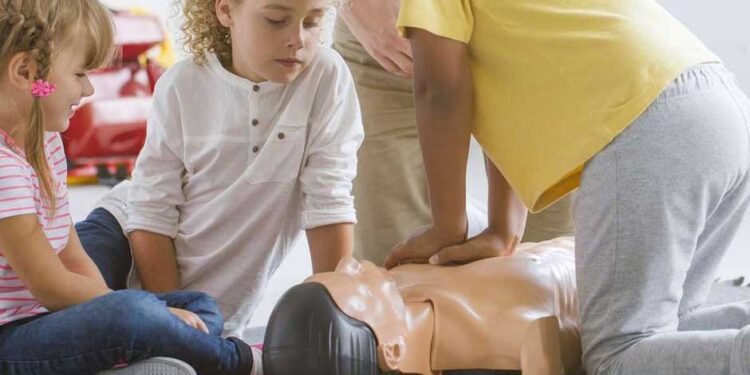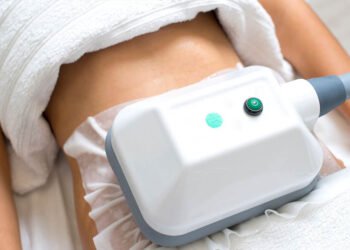Ensuring the welfare and safety of their children is paramount for parents or other caregivers. Although you want crises never to strike, you really should be ready for the worst. Knowing cardiopulmonary resuscitation (CPR) will let every parent and caregiver maybe save a life.
Accidents can strike at any moment, hence fast and exact response is vital. The advantages of CPR classes, how they equip parents and caregivers, and the rationale behind the need to learn this essential ability are discussed in this paper.
Importance of CPR
Cardiopulmonary resuscitation (CPR) is carried out as emergency treatment when the heart stops beating or when someone stops breathing. To physically move blood and oxygen around the body until emergency medical services (EMS) show up or the victim’s heart starts to beat once more, it calls for rescue breaths and chest compressions.
CPR’s main importance is found in its capacity to maintain blood and oxygen flow to other important organs like the brain during cardiac arrest. Permanent brain damage can start in minutes without care, and death can follow not too far off.
Furthermore stressed by the American Heart Association (AHA) is the fact that quick CPR can double or triple the odds of survival for someone having cardiac arrest.
Often, cardiac arrest happens at home, hence parents and other caregivers need to know CPR. Whether a child has a sudden medical emergency, near-drowning, or choking, knowing CPR lets parents act fast and boldly while they wait for help to arrive.
Why Parents and Caregivers Should Prioritize CPR Training
1. Children Are Vulnerable to Emergencies
Young children—especially newborns and toddlers—are naturally interested and prone to blunders. Children run more danger than adults from accidental drownings to food or tiny objects choking. The Centers for Disease Control and Prevention (CDC) estimate that among US children, unintentional accidents top cause of death.
Parents and other caregivers have to be ready to intervene at a moment’s notice since tragedies strike so fast. By allowing a child to act quickly, CPR instruction gives them considerably better chances of surviving in life-threatening situations.
2. Choking Incidents Are Common in Young Children
Children’s most often occurring emergency is choking. Infants and toddlers who put objects in their mouths explore their surroundings and run the danger of choking on toys, food, or small house items. Choking can strike in a few seconds even under close parent or caregiver supervision.
Learning CPR and first aid for choking—the Heimlich maneuver—allows parents and other caregivers the tools they need to remove foreign items from a child’s airway and, should needed, restore breathing. Having this knowledge can prevent choking from becoming a fatal incident.
3. Drowning Is a Leading Cause of Injury-Related Death in Children
Drowning is another main factor why parents and other caregivers should get CPR knowledge. Among children between the ages of 1 and 14, the CDC notes that drowning ranks second most regularly occurring cause of unintentional injury-related fatality. In shallow water especially, drowning can strike silently and in a few seconds.
In drowning situations, CPR is especially crucial since the brain can suffer damage even in just four to six minutes without oxygen. Improving the likelihood of a good outcome, a parent skilled in CPR can start resuscitation efforts right away while waiting for emergency services.
4. Sudden Infant Death Syndrome (SIDS) and Infant Emergencies
Some medical emergencies, including SIDS and respiratory failure, particularly target young people and render them susceptible. Although the precise reason for SIDS is yet unknown, it usually strikes during sleep and leaves parents powerless.
Although CPR cannot avert SIDS, knowing infant CPR will equip parents with an essential skill for handling crises involving breathing or cardiac stoppage in small children.
Knowing they can act during medical emergencies, CPR training gives parents of newborns with pre-existing medical conditions—such as asthma, allergies, or congenital heart defects—peace of mind.
5. Increased Confidence in Emergency Situations
Emergencies overwhelm, are chaotic, and are taxing. It can be horrifying to consider your child or somebody under your care going into cardiac arrest or choking. Still, CPR instruction gives parents and other caregivers the tools they need to act under duress.
Along with teaching useful skills, CPR classes provide equipped instruction in emergency recognition, calm-keeping, and confident application of the proper techniques. The result of an emergency can be greatly changed by this since often the secret to saving a life is a fast and calm response.
6. Immediate Action Saves Lives
In many cases, EMS can take several minutes to arrive, and every second counts during cardiac arrest or a choking incident. Early intervention in an emergency is underlined in CPR classes.
For example, doing CPR during the first few minutes of a cardiac arrest will greatly raise a victim’s survival rate. Trained in CPR, parents and other caregivers enable quick action to provide urgent treatment while they wait for expert medical help.
CPR Training is Accessible and Easy to Learn
Parents and caregivers from various walks of life can get CPR classes since they are easily available and are meant to be simple. Many companies, like the American Red Cross and the American Heart Association, provide CPR certification courses catered especially to parents and caregivers.
Usually accessible online or in-person, these classes give flexibility to fit into hectic schedules. Usually, CPR courses for parents and guardians address:
- Adult, child, and infant CPR
- Recognizing signs of choking and how to respond
- Responding to breathing emergencies
- Techniques for clearing an obstructed airway
- Making use of an automated external defibrillator (AED)
Many courses also incorporate hands-on practice with mannequins, practical demonstrations, and situations meant to replicate actual crises. Participants in a course get a certification, which should be routinely renewed to guarantee that skills stay current.
Every Parent and Caregiver Should Learn CPR
One cannot stress the value of CPR classes for parents and other caretakers. Children are prone to mishaps, medical crises, and life-threatening events; so, early preparation will help to make all the difference.
Parents and other caregivers who receive CPR instruction equip themselves with the tools, confidence, and knowledge required to handle cardiac arrests, choking events, and other crises that could strike.
If you want to learn more, check out cpr course Melbourne. In addition to protecting your child, enrolling in a CPR course might help another youngster in your care to survive. These vital skills ensure that you are always prepared to act when seconds count the most.
Every parent and caregiver should make CPR training a priority—because you never know when you might need to save a life.












